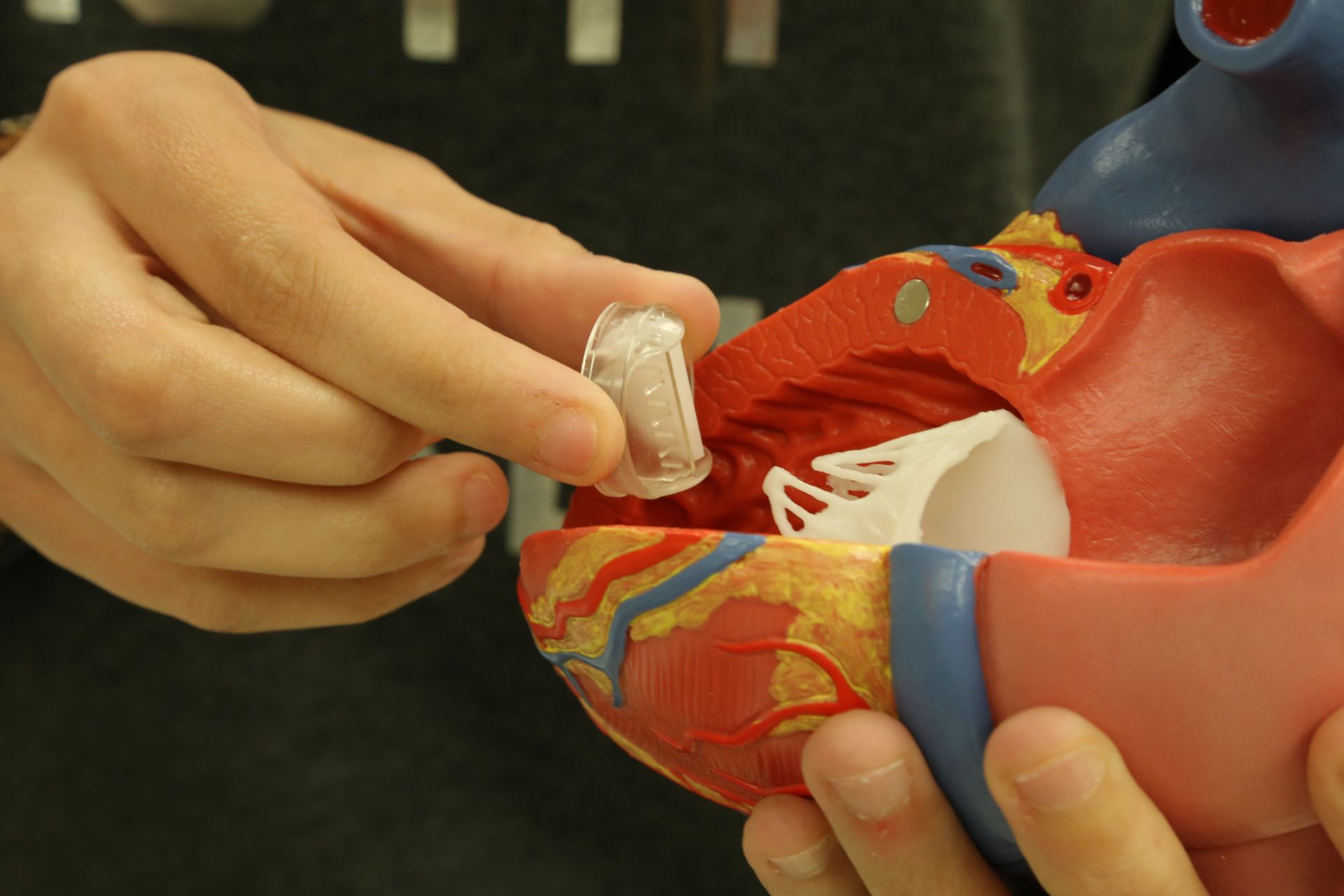
Ohio State researchers have been instrumental in developing a new, improved replacement heart valve. Credit: Courtesy of Ohio State
Ohio State scientists are developing advanced heart valves that might reduce the amount of operations and medications needed by patients. Researchers are calling this a breakthrough in heart valve replacement technology.
Heart valves help the muscle pump blood by preventing the blood from flowing backward. When a valve is diseased, the heart has to work harder to pump blood forward, which could result in symptoms such as palpitations and shortness of breath.
To replace a damaged valve, patients need to receive a mechanical or a biological valve replacement, made from pig or cow tissue. But both of the valves involve severe risks or limitations for patients, said Lakshmi Prasad Dasi, an associate professor in the Department of Biomedical Engineering who served as the principal investigator of the research.
“Heart valve disease is the second biggest component of heart disease,” Dasi said. “It affects a large number of elderly in the United States, and also young people who are born with the congenital heart defects.”
Mechanical valves are durable, but demand a lifelong intake of blood thinners — drugs that prevent blood clot formation, which might lead to complications such as excessive bleeding, he said.
In terms of mechanical heart valves, researchers strive to develop heart valves coated in superhydrophobic materials, which largely decrease the probability of blood clot formation.
Another effort to advance mechanical heart valves is to redesign and make them more closely resemble natural heart valves. The improved valves could benefit blood cells, as well, by decreasing turbulence.
In contrast to mechanical valves, biological valves require less medication. However, just as a leather shoe would wear out through time, such valves have limited lifespans and patients need to go through new replacement treatments after the old valves wear out, Dasi said.
To improve traditional treatments and replacement materials, Dasi and his team are developing a synthetic polymer technology, which aims to replace animal tissues with polymeric sheets to increase the durability of biological heart valves.
Heart valve disease treatment typically comes in two forms: open heart surgery or transcatheter aortic valve replacement, a nonsurgical method that uses a catheter to wedge a new valve into the diseased aortic valve.
The treatments do have certain limitations, Dasi said. While open heart surgery works for most patients, it is not recommended to those with poor health, like the elderly, Dasi said.
As for the nonsurgical treatment, the new valve might not fit well into the old one as a result of misplacement or wrong selection, which makes the treatment suboptimal, he said.
Dasi’s team is also developing 3D printing and computational modeling for planning transcatheter aortic valve replacement. The technology enables surgeons to position new valves more precisely into the old ones, as well as help them customize the valves.


